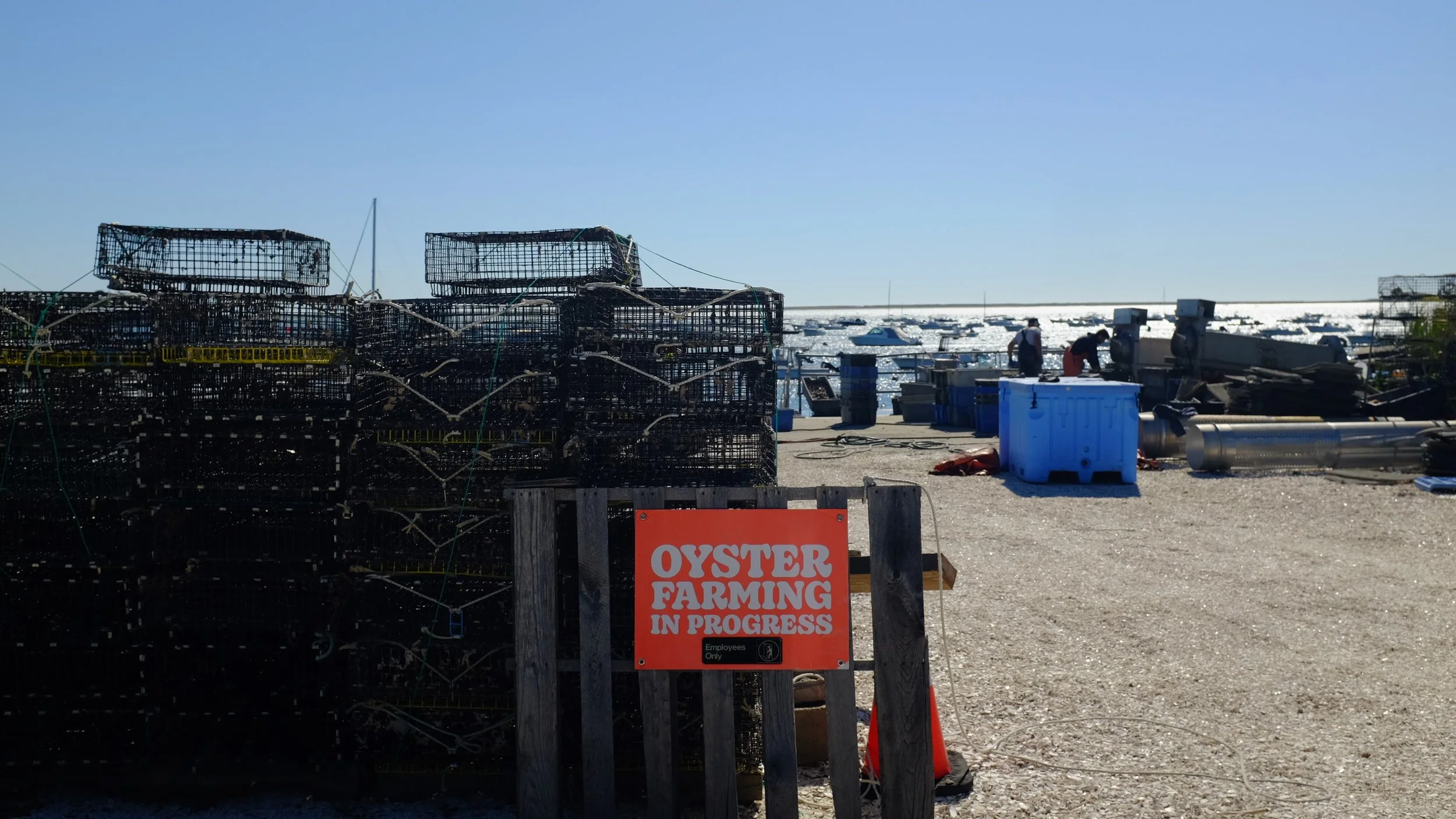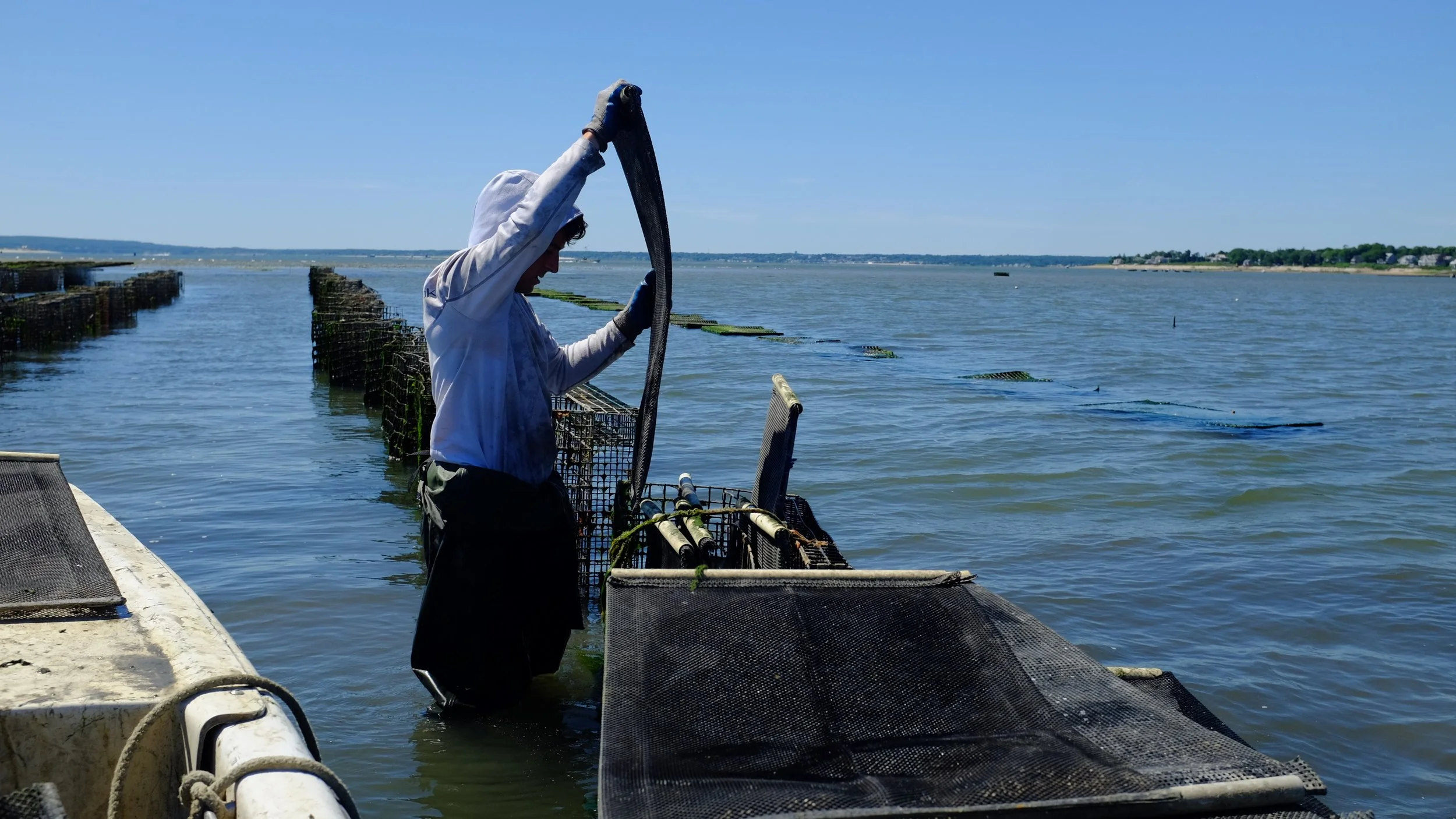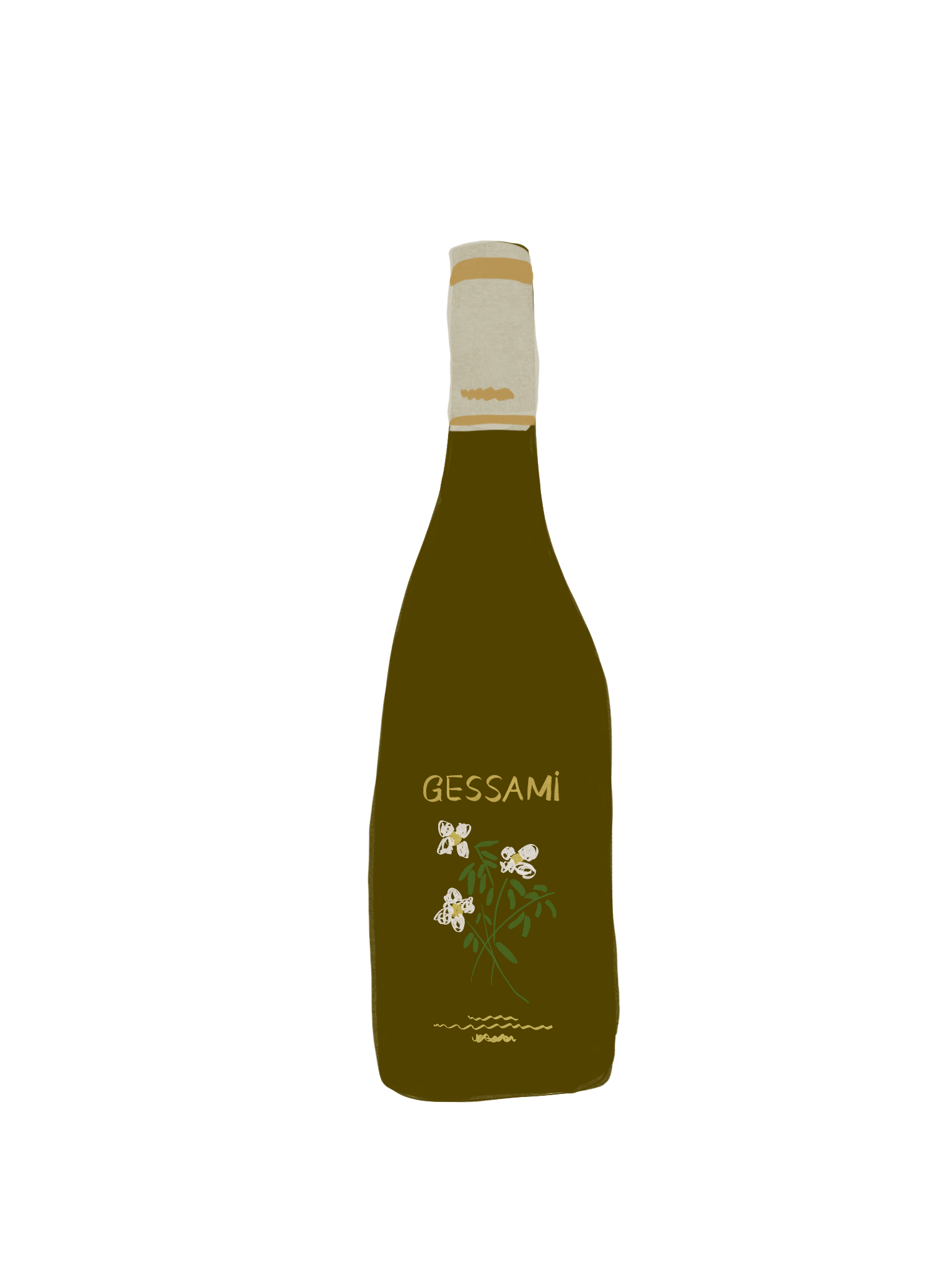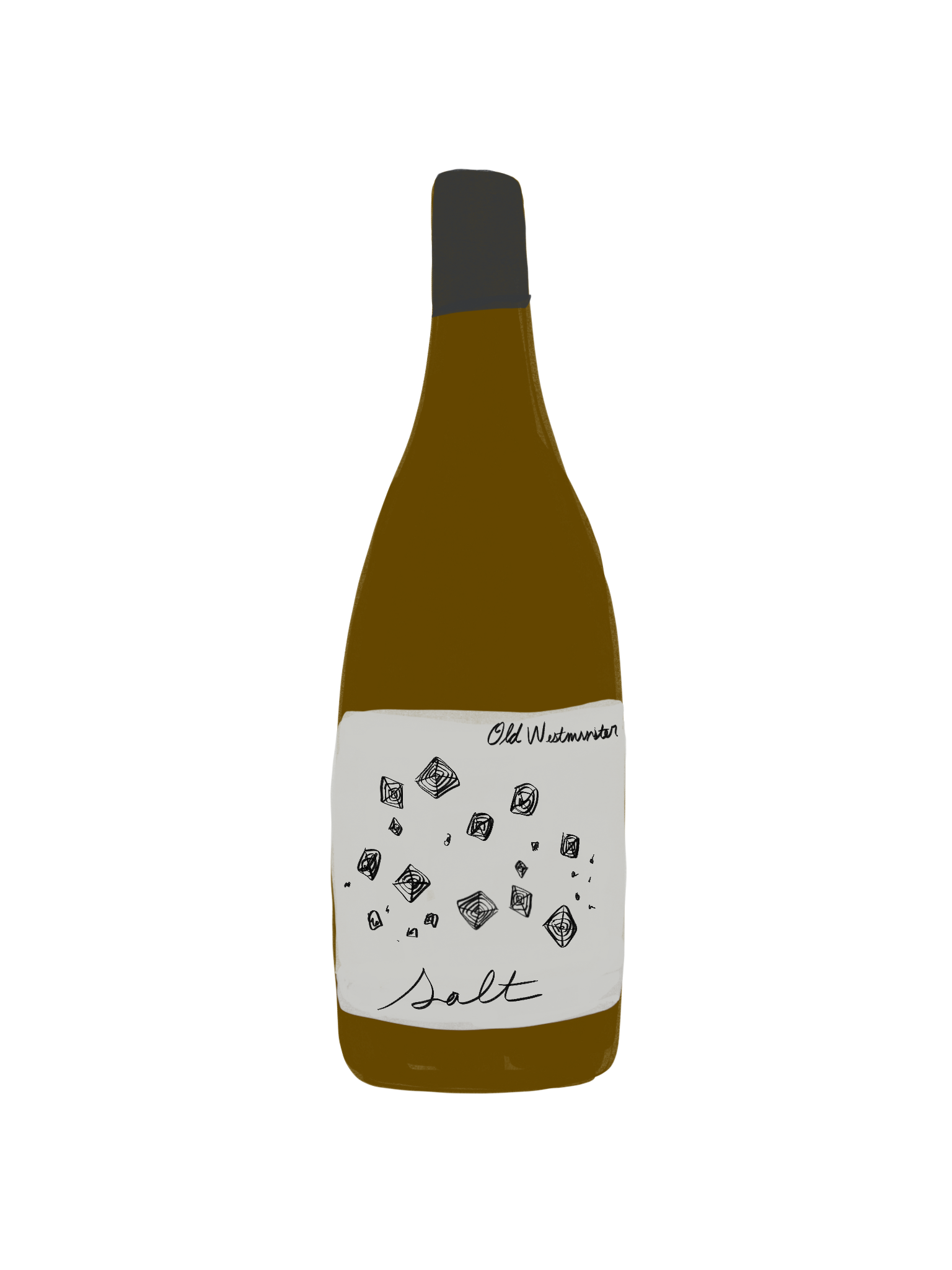The SWURL Guide to Oysters and Wine
Last week, I overheard two kids debating the proper way to eat an oyster. One of them, no older than 12, was arguing that it was best to slurp it quickly, in one gulp, “like a tequila shot.” The other was making an impassioned case for taking at least one bite of the oyster. He waxed poetic about the importance of chewing the oyster slowly to fully enjoy its taste. How it deserved to be savored.
I’ve been eating oysters by the dozen since I was around the same age as these two young boys. Growing up on the South shore of Massachusetts in Duxbury, where oyster farms fill the bay, enjoying shellfish on the half shell is a central part of life. While it's true that all food and drink can, and maybe should, be savored, oysters and wine uniquely reward this kind of sensorial engagement. Oysters, like good wine, are small expressions of time, place, and the hand of the grower.
In that realm, just like there are many grape varieties, so too are there different species of oysters. And as with wine, variety is perhaps the first determinative factor in flavor and texture. So, from a sommelier and a lifelong oyster aficionado, I give you the SWURL oyster bible: Everything you need to know about oyster breeds, terroir, condiments, and wine pairings.
Photo by Helena Jensen
Oyster Varieties To Know
Atlantic Oysters
Most of the oysters grown on the East Coast of the United States and Canada are Atlantic oysters, a species native to the gulf of Mexico. These oysters have larger strong gray-ish brown or green shells and are typically briney with varying levels of savoriness, sweetness, and salinity depending on where they’re grown. Atlantic oysters thrive in super salty cold water, coming from farms ranging from Rhode Island all the way up to the tip top of Canada.
Kumamoto Oysters
Another beloved variety in the United States is the Japan-native Kumamoto, which is often grown in the Pacific Northwest. These are smaller and rounder with a deep cup and a delicately sweet and nutty flavor.
Olympia Oysters
The only native west coast oysters, Olympias, are a species that have become endangered in the wild. Several farms are growing them for restoration and consumption purposes. They are very small in size but have a mighty sweet citrus-copper-seaweed flavor. If you’re lucky enough to see these on a raw bar menu, they’re a must-try.
Pacific Oysters
Kumamotos take a long time to reach maturity, so it’s far more common for farmers in the region to raise another Asian-imported variety, the Pacific oyster. Pacifics are very distinctive in shape and in flavor. They have naturally ruffled edges with dark black and green stripes and tend to be longer, flatter, and more fluted in shape. Known for their less apparent brininess and saltiness, they tend to show more subtle vegetal flavors like cucumber, melon, and seaweed. Despite being known for their native Belon oysters, many of the oysters grown across the Atlantic in France are actually also of the Pacific variety.
Belon Oysters
In France, Belons are still the star of the show. Known sometimes as European Flats, these oysters have far more shallow cups than their counterparts. With smooth, very circular pale green and light beige colored shells, the oysters themselves are remarkably intense in flavor and in texture. The texture of Belons goes beyond meaty into a chewiness that borders on crunchy - they are firm in all senses of the word. They begin with a complex mild brininess that is followed by a distinctive tinny, metallic, and intense lingering finish.
Oyster Terroir
The variety of an oyster, just like the variety of a grape is only the beginning of its terroir narrative. Oysters are incredibly responsive and expressive of the particular microclimates in which they are grown. The first and most obvious way that this is expressed in taste is through the liquor (or liquid) inside of the oyster shell. The water in which the oysters are grown makes up the liquor inside the shell, so when you eat an oyster you are literally tasting its terroir. The oyster liquor is where different degrees of salinity, earthiness, minerality, vegetal-ness all begin to come into play. These elements can vary dramatically across bodies of water and the oysters that grow in them. Just imagine the flavor difference between a sip of deep super salty ocean water up from northern Maine and a sip of water from a shallow brackish salt pond in Rhode Island.
But there are other more interesting ways that the nuances of microclimates can affect oyster flavor and texture. It’s not just what’s in the water that the oysters live in, but it’s also about how that water moves. If local tides are dramatic enough that low-tide mud flats render the oysters exposed to open air for extended periods of time, this can have an unexpected effect on the profile of the oyster. To hold in all of their liquid while parched for water, the oysters have to flex their muscles super tight to keep their shells shut. Repeating this strengthening exercise leads to a plumper and sweeter oyster.
Frequent, dramatic tides are also important for oyster growth because they regularly deliver new, clean, fresh, algae-rich water for the oysters to feast on. Oysters respond to this nourishment in-kind. They are mighty workhorses filtering over 50 gallons of water per day each. They remove excess nitrogen from their environment by incorporating it into their shells, helping to prevent algae blooms which can cause depleted levels of oxygen in marine ecosystems.
Oysters are also profoundly affected by the temperature of the water that they are grown in. As with grapes, colder average temperatures means a longer maturation time, and can often mean a more complex and developed flavor. Longer and colder growing seasons also lead to thicker, more robust shells which usually lead to oysters developing stronger meat. In chilly water, an oysters' metabolic rate also increases and it absorbs more nutrients. And you can literally taste this! Just try eating an oyster in late October or early November. Getting ready for winter, the oysters will have fattened up by increasing their glycogen reserves from stored nutrients. They will be plump, sweet, savory, and richer than oysters harvested in warmer months.
Oyster Farming
Observing the way that oysters respond to different forces allows oyster farmers some creative freedom in how they raise them. For example, Skip Bennett of Island Creek Oysters began his oyster farming journey in Duxbury by simply tossing seed into the bay and letting the oysters grow out in the mud of the bay. Not only did these oysters take on a particularly pleasant earthy and mineral flavor but he noticed that these free-tossed oysters getting rustled around in the tides developed deeper cups and stronger muscles. So over time he and other farmers started using technology like floating cages to intentionally expose certain oysters to rougher waters and tumbling tides. Oysters in Duxbury are now grown out on the bottom floor of the bay, in trays, and in these floating cages. Within the same microclimate of Duxbury bay, the same species of oyster looks and tastes completely different depending on the method in which they are grown.
Photo by Helena Jensen
How To Properly Taste Oysters
Tasting all of the nuances in an oyster is easiest when the oyster itself is as fresh and cold as possible and undressed. Any oyster purist will say that a good oyster is perfect alone — totally complete in and of itself. But go to any raw bar and you’re sure to find some kind of accoutrement offered. At worst (sorry), there will be cocktail sauce. But the more tolerated garnishes will be lemon and mignonette - a fancy French word for a simple concoction of champagne vinegar, cracked black pepper, and shallot. This is to say if there are any acceptable condiments for a good oyster it will be something minimal, bright, and a bit acidic, nothing a sip of cold glass of Aligoté cannot offer.
Pairing Wine & Oysters
Of course, it makes sense that wine and oysters are long-time friends. They work in harmony — the acidity and crispness of the right wine balances out the salty umami of the oyster. Often, when pairing wines with oysters, traditionalists tend to pair like with like. Some of the most classic pairings are, unsurprisingly, French wines like Muscadet, Chablis, and Champagne. These wines are acidic, on the leaner side, and have marked minerality. While these can be beautiful pairings and are classic for a reason, I also appreciate wines with a bit more florality and a touch more body. So if I’m going French, I’ll opt for a medium bodied Aligoté from northern Burgundy. In lieu of a racingly mineral blanc de blanc Champagne, I’ll go for a creamier chardonnay-based Cremant du Jura. A good amount of acidity is a non-negotiable in my book, but that’s just the beginning. Dry orange-blossom filled Muscats from Northern Spain, salty peachy Alvarinhos from Vinho Vero in Portugal or Rias Baixas in Spain, spicy green Gruner Vetliner from Maryland (yes, Maryland), lemon-lime effervescent Txakolinas from the Basque Country, honeycomb-laced Chenin Blancs from the central coast of California — these are just a few of the myriad possibilities for flourishing oyster-wine unions.
It’s no surprise that many a wine-lover is also an oyster-lover. When I heard those kids debating the best way to consume an oyster, the intellectual and analyst in me initially agreed with the boy advocating for savoring and enjoying slowly, with care. But when I think about my favorite memories involving wine and oysters, both together and separately, I can’t honestly say I was intently focused on the granular details of flavor, texture, and aroma while I was consuming. More often than not, I was with people I love, tossing them back with joy like tequila shots.
5 Wines I Love To Drink With Oysters:
Ameztoi, “Getariako Txakolina” 2022
Getaria, Spain
Sylvain Pataille, “Bourgogne Aligote” 2021
Burgundy, France
Bénédicte et Stéphane Tissot “Crémant du Jura” NV
Jura, France
Gramona Gessami, “Penedes Blanco” 2022
Penedes, Spain
Old Westminster, ‘Salt’ 2022
Westminster, Maryland, United States








